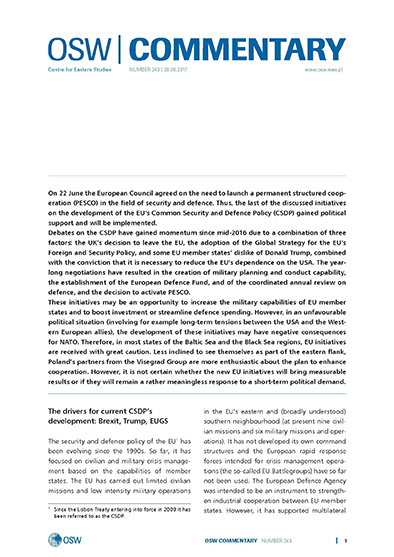A partial success of trade cooperation within the ‘16+1’ formula: the case of food exports to China
A partial success of trade cooperation within the ‘16+1’ formula: the case of food exports to China
Author(s): Jakub Jakóbowski
Subject(s): Governance, Economic policy, International relations/trade, Geopolitics
Published by: OSW Ośrodek Studiów Wschodnich im. Marka Karpia
Keywords: 16+1; China; economic policy
Summary/Abstract: When in 2012 China approached the countries of Central and Eastern Europe (CEE) with a proposal of cooperation in the ‘16+1’ formula, it declared it was willing to meet the needs of CEE countries. Beijing had been aware of the political importance of the problem of trade deficit (which has been ongoing for years) and launched cooperation with the governments of 16 CEE countries to boost imports from these states. The years 2011–2014 brought an improvement in the balance of trade between China and: Hungary, Latvia, the Czech Republic, Romania, Bulgaria and Croatia. The remaining ten CEE countries recorded an increase in their trade deficits. Changes in CEE countries’ balance of trade with China resulted only slightly from political actions. Instead, they were due to the macroeconomic situation and to a deterioration of the debt crisis in the EU which, for example, caused a decline in the import of Chinese goods in some of these countries. Multilateral trade cooperation was successfully developed in the entire region only in the agricultural and food production sector – the area of greatest interest to China. The pace of bilateral cooperation with specific countries varied, with the fastest being Poland, Latvia, Romania, Hungary and Bulgaria. Actions by governments of CEE countries resulted in Chinese market opening up to hundreds of local companies which, in turn, translated into an increase in the volume of foodstuffs sold by ‘the 16’ to China from US$ 137 million in 2011 to US$ 400 million in 2014. The success achieved in the agricultural and food production sector has demonstrated the effectiveness of trade cooperation in the ‘16+1’ formula. It is, however, insufficient to generate a significant improvement of the trade balance. At present, the sector’s share in the total volume of goods sold to China by CEE states is a mere 3.7%, and any reduction of the trade deficit would require long-term and more comprehensive solutions still to be implemented by the governments of individual CEE states.
Series: OSW Commentary
- Page Count: 9
- Publication Year: 2015
- Language: English
- Content File-PDF

